
I've recently finished reading Paul Pope's graphic novel "100%". I thought it was excellent.
I hadn't heard of Pope or seen anything by him until I saw a video review of the first issue of his 1995 comic "THB" on the Cartoonist Kayfabe channel. The channel's been a source of some great material and I hope it manages to survive the recent terrible events.
THB is a very early Pope comic, self-published from the mid-1990's. As soon as the boys opened it up it was intriguing: different just looking at the title and graphic design. The first thing I noticed about the art was the fluidity of the ink style, quite obviously brush driven rather than pen. Using a brush for inking is much less common, even back before digital production took off.
"100%" dates from the early 2000's but, again, you can see the dynamic black and white brush-work and his recognisable style in full effect. There's an organic quality that I think only a brush can fully exhibit. There is a "Paul Pope" face and figure style.
On top of the great comic art, the actual story itself is good. The story is an aspect of a comic that is often less developed, if not sometimes puerile (with some notable exceptions of course). Adults need something better and "100%" is that, just don't expect superheroes or explosions. From what I can see, Pope does pretty well selling original art as well. Definitely someone worth reading.

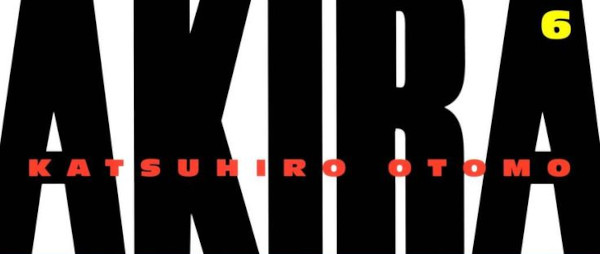
I finished reading Akira a couple of weeks ago, getting through the last of the six volumes. A very impressive work and I thoroughly enjoyed it. As I mentioned recently, there's never a dull moment, the story moves quickly, there's a lot of action and, of course, the art work is exceptional. What surprised me somewhat was the writing: it was much better than I expected and not in the least "childish", even if it has to be a little basic at times. A comic strip is a lot more than just the drawing, even though that is always the most visceral and accessible aspect of the work. This was easy to read and had a satisfying and moving conclusion. I completely understand its classic status.
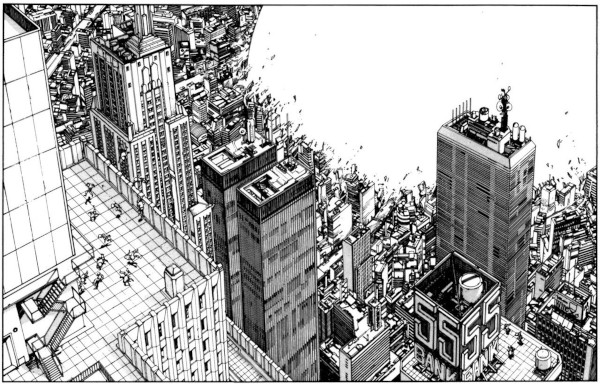
Katsuhiro Otomo's art is detailed and dynamic. He really puts Neo-Tokyo and its inhabitants through the wringer with great drawings of buildings, destruction, military hardware, motorbikes, guns. Did I mention destruction? Masterful stuff. The one small criticism I have it that sometimes it was a little hard to see what happening in a panel there was so much detail. But this is a work worth paying attention to.
A wonderful book that I'm glad to have finally read. Perhaps I'm of an age that I really appreciate the whole package now but I would recommend it to any age group, teenage and up.
I am yet to see the animé film, but I am told it is good. Something to look forward to.
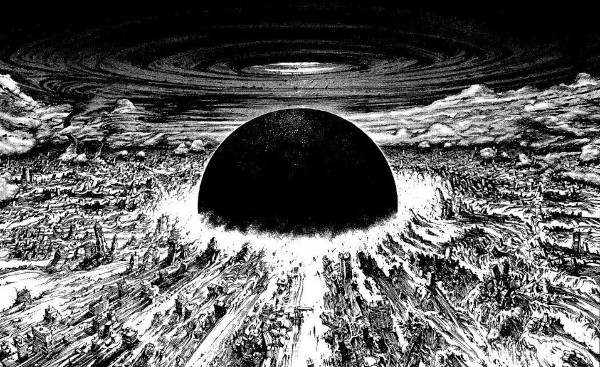
Above: Akira - The bomb
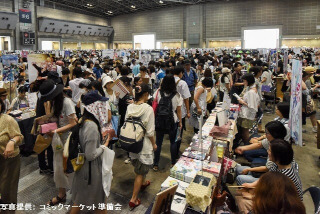
Above: Comiket Tokyo, a huge Japanese comic fair held
multiple times a year.
Comics are still a big industry and the largest in the world is in Japan, followed by France and the USA. Japan has a long history with comics (Manga) and the market there is huge with lots of physical comic books sold and massive Manga shows. I've been watching the Cartoonist Kayfabe YouTube channel and my eyes have been opened to just how big comics are over there.
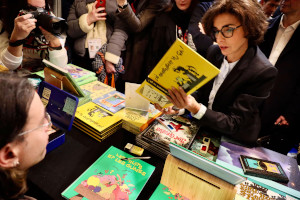
France is the second largest market for comic books (called "Bande Dessinée" or "BD"). The Guardian have a decent article online about the large comic convention held in Angoulême, France, every year:
France’s comic-book tradition is hitting new heights.
Left: At the Angoulême comics fair. Photo credit: Yohan Bonnet/AFP/Getty Images in The Guardian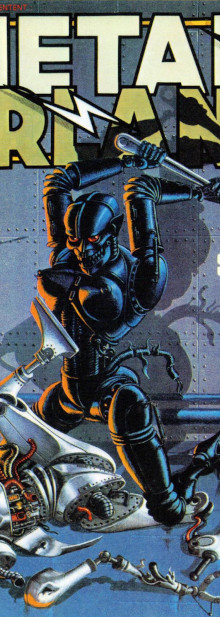
Like the Japanese, the French do comics differently to us in the UK. Whereas the UK public has mostly seen "comics" as a form of entertainment for children, the French have seen comics as an art form and, as such, given them much more respect. The gap in perception has narrowed over the past two decades but I suspect it is still there. When I first looked at French comics the difference in the culture was like night and day. In the 1980's I started to read BD by the likes of Moebius, Bilal and Druillet: the French magazine Métal Hurlant was seminal at this time (and its American cousin Heavy Metal). Manga has made big inroads to the French market over the past few years: over half the market according to The Guardian article.
Right: Métal Hurlant no.8. Cover (detail) by Jean-Michel Nicollet.
With manga, I certainly looked at it back in the day (mid-80's) but I think this was just before of the good sort was available.
I just couldn't get past the way faces and eyes were drawn, or the often childish looking characters. Looking back now, I know I jumped to
entirely wrong conclusions, but with so many other great comics coming online to me at the time, I never found time to take another
look.
One of the best known Japanese comics, and perhaps the biggest hit of them all, is Katsuhiro Otomo's Akira, first published in Japan in 1982 with a first edition in English (Marvel's Epic line) in 1988. To many, this was the book that completely changed their perception of manga.
I might have glanced at Akira years ago but it would have been a superficial look. The guys on the Kayfabe channel are massive fans of Otomo and have been going through his comics and paying serious and deserved attention to their quality. It's been enough to have me taking a proper look. I've been lucky that my library (Edinburgh Central) has a fairly decent selection of comics and graphics novels so, when I saw they had the first few Akira volumes on the shelf, I knew what I had to do.
I've now read volumes one and two, and have three and four out on loan to read. Each is a thick black and white book but not heavy going in any way and the story moves along briskly. It's set in a near future "Neo-Tokyo", rebuilt a few decades after a World War and after massive devastation caused by a "new type" of bomb dropped at its center (see top image). A cyber-punk type future we've seen a lot more of now but here is a well paced story, fresh and well written, with great art. Otomo excels at detailed buildings and backgrounds, machines and action.
The comic reads surprisingly well and looks beautiful too: I am ashamed I took so long to pick it up but would recommend it to anyone.
Below: A panel from Akira. © Katsuhiro Otomo.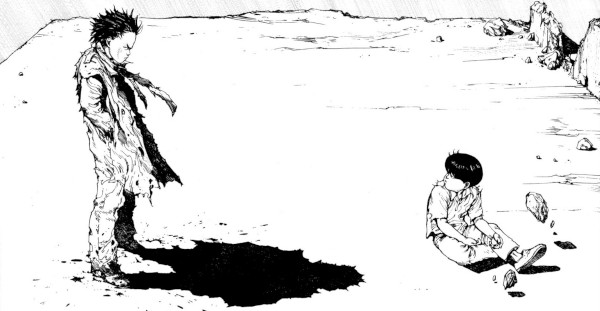

Going through some of my old comics and comic books, I came across a hardback French edition of Moebius' Le Garage Hermétique, the first version in colour. A true classic of French bande dessiné and a strip I first came across in the American Heavy Metal magazine in the late 1970's. This colour version was published by Les Humanoïdes Associés in October 1988.
Inside is a colour poster insert: a blow-up of one of the most striking panels in the strip. I had completely forgotten about his but what a wonderful surprise to rediscover. It is revealed that it was a woman under that hat all along, not a man!
This is not something to leave hidden away inside a book anymore. It deserves a frame and to be hanging on a wall. RIP Jean Giraud a.k.a. Moebius.

A long time ago I bought a new comic magazine called Love and Rockets in my local comic shop and discovered the amazingly talented Hernandez Brothers, Jaime and Gilbert. This comic was a real watershed in my appreciation of the art of the cartoon strip.
I've recently been looking through some of these and re-reading a few of Gilbert Hernandez's Palomar stories. Palomar is a fictional and old-fashioned Mexican town inhabited by an odd variety of people (some real eccentrics), dysfunctional families and a cast of children and adolescents that can steal the show. A bit of a soap opera with a latino telenovelo feel to it. Often a bit magical or weird. Now I want to re-read a lot more.
Gilbert Hernandez is very good with the women and children. Here, little Casimira is learning what it takes to be "mom" in her house; much to the horror of her sister Guadalupe. Funny, but also a bit sad (I mentioned dysfunctional already). This is from Human Diastrophism in Love and Rockets no. 24 from 1987.
Click on the images for larger versions.


I would like to return to these pages and my love of comics in the future.



